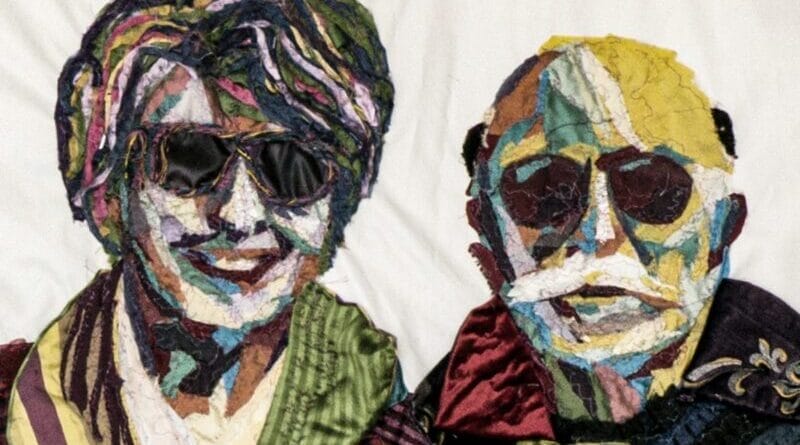I Pionieri – DAMSS
This column will present twice a month a historical figure of Italian Fiber Art, present in the book Fiber Art Italiana. I Pionieri.
You can buy it HERE
DAMSS is an acronym for the husband and wife Daniela Arnoldi (environmental engineer at the chemical-pharmaceutical industry) and Marco Sarzi Sartori (architect responsible for production, materials technology and their processing), who have been forming a very interesting artistic partnership since 2000.
Both pour into it in addition to passion, the skills of making quilts and patchwork Daniela, and works with copper wire discarded by her father’s company, Marco. In 1975 Daniela enrolled in the textile courses of the school “School of Applied Art” of the Castello Sforzesco in Milan, working on the concept of recovery and recycling, then decided to involve her husband in textiles by attending a creative sewing course and perfecting themselves in the techniques of felt, weaving, macramé and dyeing – until in 2000 they decided to design and create textile works by jointly signing them with the name DAMSS, by which they are then known.

Interested from the beginning in the recovery of any waste material from the textile industry–spools, selvedges, buttons, fibers of all shapes and types, carpets, plastic strips, ribbons, fabrics–they rework them with ever new techniques. Early tapestries recall plant figurations, flowers, woods, meadows, in a medium format. As in Speculum pacis (2000), which shows large red poppies with splotches of color arranged on a geometric background, made from webbing of fabrics in solid colors and floral patterns, while on the right polychrome yarns simulate a trunk. Or as in Semchinum (2003) in which the floral theme evaporates in the central part in almost watercolor-like patches of color, thanks to a fading technique, and becomes three-dimensional with the pictorial embroidery above.

Then they equip a workshop with custom-made machines and tables to make large tapestries: together they shape silk by hardening it with synthetic resin and pressing it into silicone casts, use alcohol anilines that they decolor with acid, and enliven the chromatics with touches of restoration colors, in inexhaustible experimentation. Passator cortese (2009) is inspired by the legend of the same name and presents a forest crossed by a path made of twisted yarns, surrounded by flower petals and raised foliage. The textile work sometimes takes on large overhangs in the curled fabrics and high-speed twisted yarns to form large beads in relief, which arrange on two-dimensional surfaces, as in the latest productions, in which the tapestries take on very large dimensions and often consist of several pieces. Mith (2013) for example is developed in twelve pieces in which the couple self-represents in life-size, dressed differently from time to time, to play fictional characters with self-mockery. Of great commitment is the monumental tapestry-diorama dedicated to Leonardo da Vinci’s The Last Supper (8.70 meters wide x 2.50 meters high), a tribute to the great Renaissance genius (2014) that reproduces with fabric scraps and a variety of inserts and interventions every detail of the fresco. There are many large works dedicated to cities, among them, Venice Lagoon (2012) and Le Cinque Terre (2014), a multi-piece work whose overall size reaches 24 meters, composed of five large tapestries, connected by textile interpretations of sea and rock. Rome 3000 (2017) is part of the series of subsequent interpretations that imagine the, catastrophic, future of our cities.
A proceeding and experimenting with techniques and materials to create works animated by reliefs, insertions, embroideries, embossing, overlays, and padding, in an overwhelming superabundance that animates works of monumental dimensions that engage and envelop the viewer.


